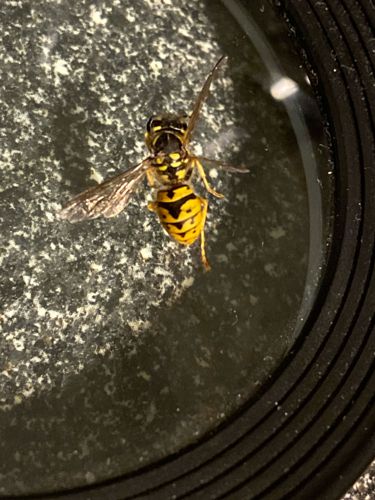Yellowjacket (possibly German Yellowjacket, Vespula germanica, or Eastern Yellowjacket, Vespula maculifrons)
Scientific Name: Vespula spp.
Order & Family: Hymenoptera, Vespidae
Size: Workers typically range from 10-15 mm (0.4-0.6 inches) in length; queens are larger, up to 18-20 mm (0.7-0.8 inches).

Natural Habitat
Yellowjackets are common in urban areas, suburban gardens, woodlands, and grasslands. They often build nests underground, in hollow trees, wall voids of buildings, or dense bushes.
Diet & Feeding
Yellowjackets are omnivorous. Adults feed on nectar, fruit, and sugary substances as an energy source. Larvae are fed protein, primarily in the form of chewed-up insects and spiders, which adults hunt and kill. They are also known scavengers, attracted to carrion, picnic foods, and garbage.
Behavior Patterns
Yellowjackets are social insects living in colonies with a queen, workers, and drones. They are generally aggressive, especially when their nest is disturbed or when foraging for food, and can sting multiple times. Their activity increases in late summer and early fall as colonies grow and food sources become scarcer.
Risks & Benefits
Risks include painful stings, which can cause allergic reactions (anaphylaxis) in sensitive individuals. They are considered pests due to their aggressive nature and attraction to human food. Benefits include their role as predators, controlling populations of other insects like flies and caterpillars, and to a lesser extent, pollination.
Identified on: 9/6/2025